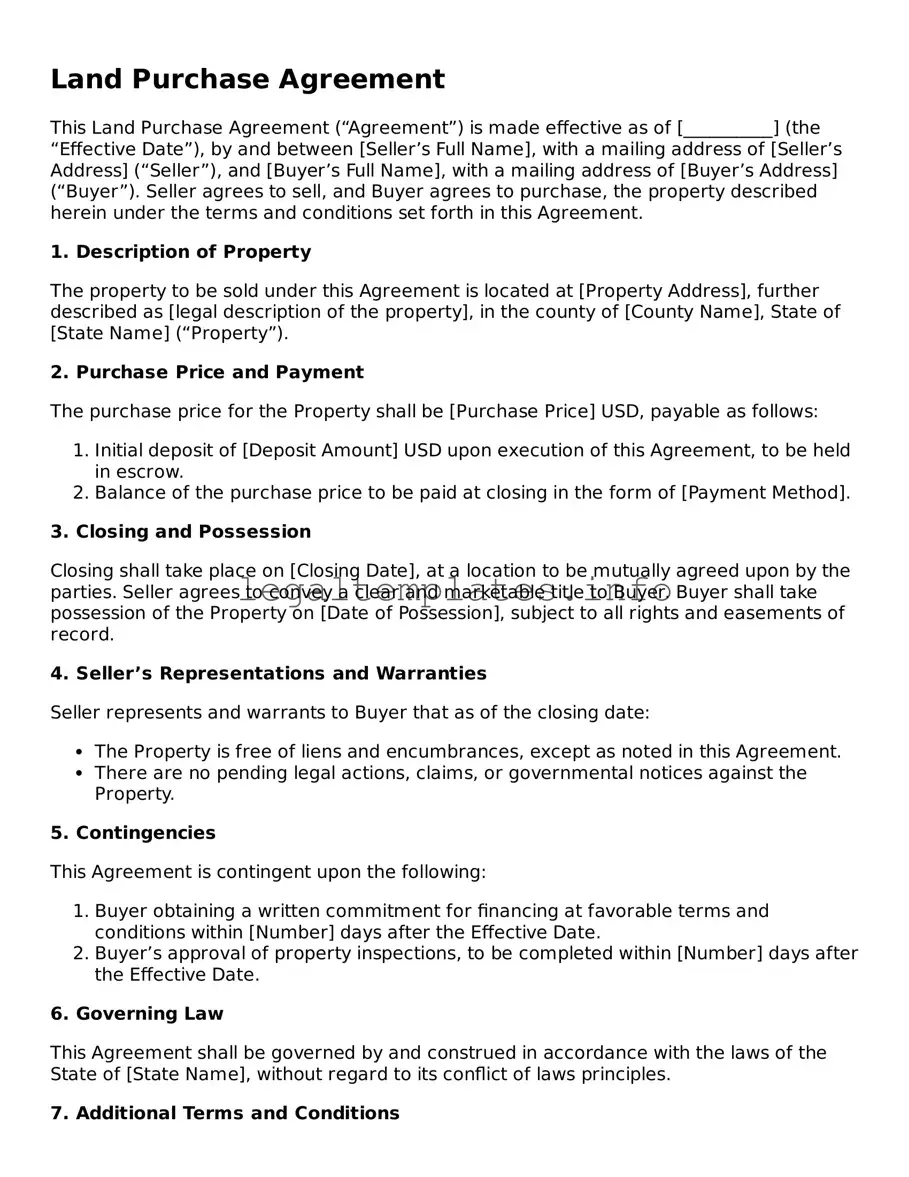What is a Land Purchase Agreement form?
A Land Purchase Agreement form is a legally binding document between a buyer and seller outlining the details of a transaction for the sale of land. It includes terms such as purchase price, description of the property, payment plans, and any contingencies leading to the final sale.
Why do I need a Land Purchase Agreement?
This agreement is crucial as it legally safeguards the rights and obligations of both parties involved in the transaction. It ensures there is a clear understanding of the sale terms, minimizes disputes, and outlines the procedure if either party fails to meet their commitments.
What should be included in a Land Purchase Agreement?
A comprehensive agreement typically includes the identities of the buyer and seller, property description, purchase price, payment method, earnest money deposit, property disclosures, closing date, contingencies, and signatures of both parties.
How is a purchase price determined in the agreement?
The purchase price is agreed upon by both the buyer and seller after negotiations. It should be clearly stated in the agreement to avoid any confusion or dispute later on.
What are contingencies in a Land Purchase Agreement?
Contingencies are conditions that must be met for the sale to proceed. Common contingencies include the buyer's ability to obtain financing, satisfactory completion of a land survey, and obtaining necessary approvals from governmental or regulatory bodies.
How important are property descriptions in the agreement?
Extremely important. The property description should be detailed and accurate, including boundaries and any relevant legal descriptions. This ensures both parties are clear about what is being sold and purchased, and helps prevent future disputes.
What happens if one party breaks the agreement?
If a party fails to meet their obligations, consequences depend on the terms of the agreement itself, which may include forfeiting earnest money deposits, the requirement to complete the sale, or legal action to enforce the agreement or seek damages.
Can I modify a Land Purchase Agreement after it has been signed?
Yes, but any changes must be agreed upon by both the buyer and seller in writing. The modification should be documented and attached to the original agreement, duly signed by both parties.
Is a lawyer required to draft a Land Purchase Agreement?
While not strictly required, it is highly recommended to have a legal professional draft or review the agreement. This ensures that the document is legally sound, reflects all terms correctly, and protects your rights during the land purchase transaction.
What steps should be taken after signing the Land Purchase Agreement?
After signing, parties should begin fulfilling any contingencies, such as securing financing or completing land inspections. Prepare for the closing process, including transferring the title and completing any required paperwork. Always keep communication open between buyer and seller to address any issues promptly.
